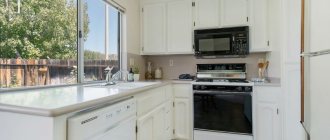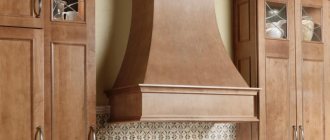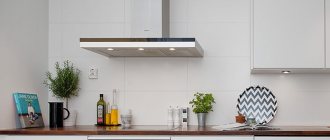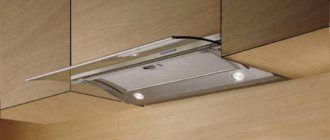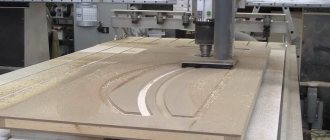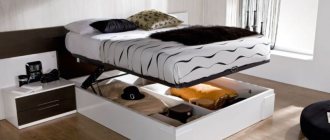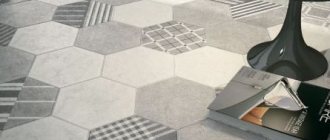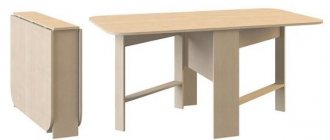For every room where gas or thermal electric appliances are used for cooking, a hood is required. This device is connected to the air duct and provides removal of steam, burning and unpleasant odors. Hoods are necessary both in residential premises and in professional kitchens. Even if a small family lives in the house and the cooking process does not take much time, without an exhaust hood the microclimate in the home will not be favorable for living. The exhaust device cannot be replaced by conventional ventilation, since the ventilation system has a completely different principle of operation and provides air exchange in a confined space, but does not remove combustion products and steam. Exhaust devices are connected by an air duct to the ventilation shaft. The duct diameter and length are calculated according to certain rules.
The most popular and practical are round air ducts.
Why is an exhaust device necessary?
A range hood is an important piece of equipment in any kitchen. Its main function is to remove polluted air. Smoke with combustion products, kitchen fumes, odors that have a bad effect on well-being, all this is removed from the room by this equipment. This device, by purifying the air, takes care of people directly in the kitchen or in neighboring rooms.
The hood provides comfortable conditions in industrial kitchens for working personnel and favorable living conditions if it is installed in a kitchen in a residential area.
Diagram of the device and operating principle of the air duct.
The exhaust device solves the following problems:
- removing odors generated in the kitchen;
- removal of combustion products;
- air cooling;
- decrease in humidity.
The hood prevents the appearance of mold and the proliferation of bacteria, for which a warm and humid environment is optimal. With an exhaust device, dirt, grease, and soot do not settle on the finishes and interior items.
The varied design of modern hoods allows you to choose this equipment in accordance with the style of your kitchen. Nowadays there are different types of such devices on sale: decorative, domed, modern and with ethnic motifs. You can also buy a built-in hood, which will be almost invisible in the kitchen interior.
How to choose an air duct pipe?
Air duct system diagram.
The correct choice of the diameter of the air duct pipe is of great importance for the efficient operation of the exhaust device. For the system to work effectively, without failures and noise, the diameter of the air duct must be the same or larger than the diameter of the hood outlet. When using an exhaust duct of a smaller diameter, the efficiency of operation decreases as a result of increased air resistance and the exhaust power decreases. However, not only the diameter of the air duct is important for the good operation of the exhaust device; you should also pay attention to the configuration of the air duct, how it is located along the wall and what its length is. When laying the air duct, you need to ensure that there are no sharp or right bend angles. When a pipe is bent by 90°, 10% of the performance of the exhaust device is lost.
The duct pipe should have only obtuse bend angles.
To avoid reverse air movement, it is necessary to equip the air duct with a non-return valve.
How to position a kitchen hood?
Using an air duct in kitchen ventilation.
Exhaust devices should be located above the heating equipment, mounted on the ceiling, or on the side, mounted on the wall. The kitchen stove should not be located at a great distance from the ventilation shaft where the air duct will be discharged, since the air duct pipe should not exceed 3 m. Exceeding this length will lead to a decrease in the efficiency of the equipment. The stove should not be installed against the wall opposite the exit of the ventilation shaft, otherwise, when laying the air duct, you will have to make a lot of bends, which will also negatively affect the operation of the exhaust system.
Installation features
You need to start installation by measuring all distances and drawing up a project. The corrugated tube is easier to install. A plug is attached to the ventilation hole (it is located on the wall or in the ceiling of the kitchen in the apartment). The pipe is pulled over the outlet neck of the hood and secured with a clamp. The sleeve is stretched to the end cap, attached to the walls using mounting brackets. The sleeve is also secured to the plug with a clamp.
Advice! If the size of the corrugation does not correspond to the diameter of the neck, adapters are used for the kitchen hood.
For rigid boxes and pipes you will need a set of shaped elements, so at the design stage it is very important to determine their exact nomenclature and quantity. Installation of a rigid pipe is more difficult. To make it easier, remove the exhaust device from the wall or the set and then re-attach it, attaching it to the already assembled channel.
In a private house, it is easier to install the outlet end of the air duct on a separate hole in the outer wall. It is easy to do in wooden buildings. The advantage of this solution is that there is no load on natural ventilation. The downside is heat loss.
Which air ducts are better – plastic or corrugated?
Now two types of air duct pipes are used: plastic and aluminum corrugated. The cross-section of plastic products can be round or rectangular. Round plastic air ducts have less air resistance than those with a rectangular cross-section, so they work more efficiently. But rectangular air ducts in the interior look more natural; they blend in with furniture and other kitchen equipment.
Diagram of the air duct fire protection system.
When installing air duct pipe elements, great attention should be paid to the quality of the connections. Therefore, it is better to buy all components for the system together with plastic pipes, so that there are no problems when joining the elements. Corrugated pipes do not require connecting elements; they are easily bent at any angle, as well as stretched and compressed. Their installation boils down to fixing one edge of the pipe to the opening of the ventilation duct, and the opposite to the outlet of the exhaust device. In addition to ease of installation, another advantage of corrugated pipes over plastic ones is their light weight. Disadvantages include noise during operation of the exhaust system, accumulation of fat and soot on the inner walls of the pipe. Plastic air ducts have many advantages:
- quiet operation;
- low air resistance due to smooth internal walls;
- are not clogged with dirt, all waste is discharged into the ventilation shaft.
The disadvantages of plastic pipes include more complex installation and the need for connecting components, as well as a higher cost compared to corrugated pipes.
Tips for installing a fume hood
Table for calculating the diameter of air ducts.
When installing an exhaust system, you must correctly calculate the height and location of the hood relative to the working surface of the slab. If it is placed too high above the stove, the hood will not work effectively; steam and unpleasant odors will remain in the room. And if you install it low above the stove, it will interfere with work. The optimal distance from the exhaust device to the stove is 75 cm.
When connecting the air duct to the ventilation duct, care should be taken to ensure that the access of fresh air to the kitchen is not completely blocked. To do this, you need to install a special grille with a mount for the air duct pipe and a special valve. When the exhaust device is operating, the valve closes, and when the equipment is not in use, the check valve opens and allows air to circulate.
When installing corrugated air ducts, grids with fittings and clamps are used. It is recommended to stretch the corrugated pipe so that there are no folds left on it, otherwise dirt will accumulate in them, and the operation of the exhaust device will be accompanied by noise.
Plastic air duct systems are installed using adapters for connection to the hood and ventilation duct.
Schemes for attaching the air duct to the wall.
In order for the exhaust system to work efficiently and with minimal noise, the diameter of the air duct must be larger than the outlet of the device. Failure to comply with this condition will increase the load on the device’s engine, reduce its operating efficiency and cause noise.
When choosing the location of the exhaust device, you need to consider its type. Flat appliances are mounted to the wall, island hoods are mounted to the ceiling. Devices with a corner mounting strip are installed inside hanging furniture. For the air duct, a hole of suitable diameter is made in the furniture. Decorative dome hoods are mounted on the wall. To disguise the air duct, install a decorative box.
How to effectively hide a structure
To give your kitchen a presentable look, you should not only secure the products, but also know how to hide the fruits of your creativity. Experts have developed several effective ways to hide an air duct. The following methods deserve special attention:
- The use of decorative boxes. In fact, we are talking about modified casings that differ not only in the manufacturing method, but also in shape and color. In some cases, it is better to install several decorative lamps.
- Installation on a suspended ceiling. Horizontal pipes are easiest to hide if they are mounted in a suspended ceiling. As for the vertical sections, protective decorative covers are made for them from a material that echoes the ceiling.
Air duct hidden in the structure of a two-level ceiling - Making a decorative box from plasterboard. The box is selected to match the design of the kitchen, and the structure itself is painted in the color of the wallpaper.
- Laying pipes inside furniture. Installation boils down to internal routing.
There are many pipes and ducts on the market through which you can install and connect a kitchen hood with an air duct to the ventilation. The choice comes down not only to the selection of products with optimal design characteristics. They take into account the personal preferences of the owners, ease of installation, and performance.
Types of exhaust devices
Today it is easy to choose a kitchen hood based on price, technical parameters, and design. Taking into account the operating characteristics, the size of the room, and the interior design, you can choose the appropriate type of equipment. Compact and inexpensive flat-panel appliances are the best option for small kitchens. They have low power, but if food is not often prepared in the kitchen, such equipment copes with its functions perfectly.
Telescopic built-in devices are more powerful than flat devices. They are equipped with a retractable carriage, which increases the air suction area and improves efficiency. Built-in devices are suitable for any interior, but they are more expensive than flat devices. Dome and decorative devices are the most powerful. They have many additional useful options, including a timer, automatic shut-off, intensive mode, perimetric suction, etc. They can be equipped with a display, touch or button controls, halogen lighting, sound-absorbing blocks and other latest improvements. This type of equipment is suitable for large kitchens where people often cook. Other advantages of dome and decorative hoods include low noise levels, varied designs, and a wide price range.
What to look for when choosing depth and height
These parameters must also be taken into account when arranging the cooking area. Let's look at how to choose the right depth and width of cleaning equipment.
Depth selection
This parameter is taken into account for dome and built-in air vents. Modern models of dome hoods are square in shape, that is, the depth of these devices is equal to their width. Accordingly, the depth dimensions also start at 45 cm and end at 90 cm. The choice of a square shape is not accidental: hobs are also produced with equal width and depth parameters. And, as we already know, the hood cannot have an area smaller than the stove over which it is installed.
With built-in models the situation is different, because the depth can be adjusted during the planning process. However, its body must match the size of the wall cabinets.
Built-in recirculation models are often equipped with a retractable panel, which increases their depth and, accordingly, their operating efficiency.


